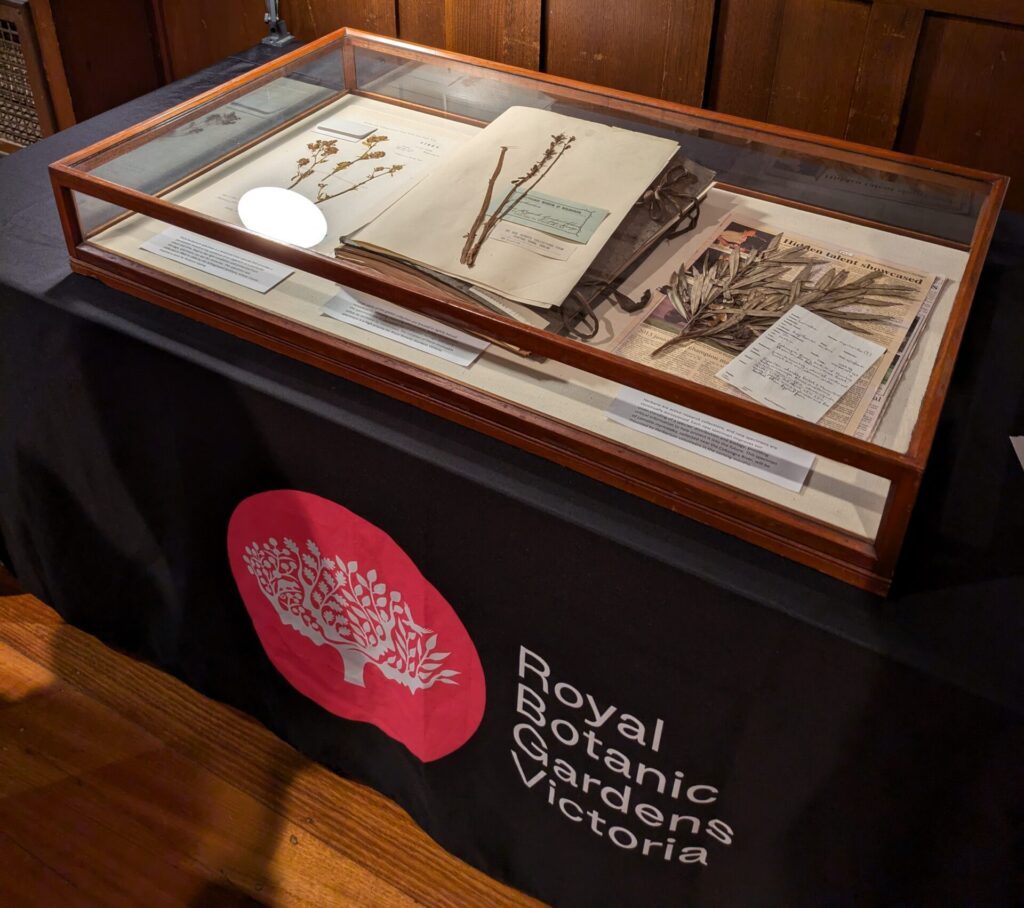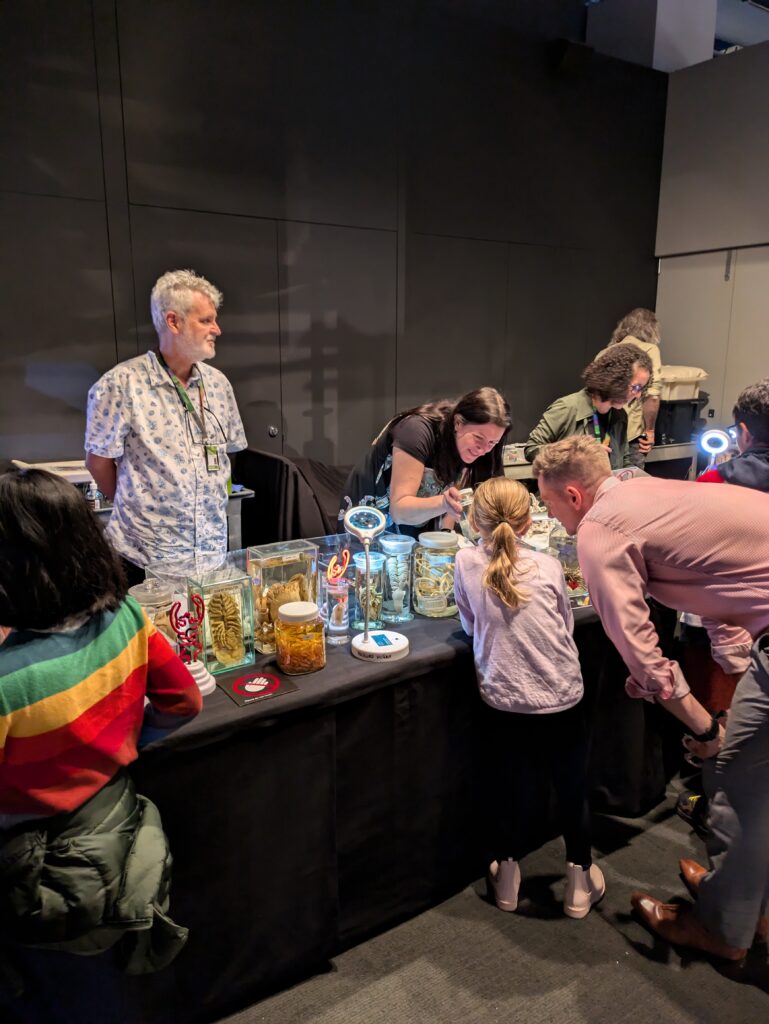Survived and Thrived: Inspiring Victoria Partner Events from National Science Week 2024
By Dr Catriona Nguyen-Robertson,
Chair of the National Science Week Victorian Coordinating Committee
Victoria is home to many ecosystems. Reflecting on Victoria’s diverse ecosystems in this edition – both the communities living in different pockets of Melbourne and the changing landscapes housing flora and fauna – one thing holds true: we’re stronger together. “Community” extends beyond human collectives to embrace a vast network of amazing, adaptable lifeforms, all of us reliant on each other to survive and thrive in our remarkable planet’s dynamic web of life.
For this year’s National Science Week, the Survive and Thrive was produced by the Inspiring Victoria program, exploring how we can use science to help flora, fauna, and ourselves not only survive, but also thrive in this changing world.
Survive and Thrive was a series of community-focused events presented in collaboration between Museums Victoria, Royal Botanical Gardens Victoria, Zoos Victoria, and the Royal Society of Victoria for National Science Week.

Journey Beyond: with Katherine Bennell-Pegg (Museums Victoria)
As humanity reaches for the stars and ventures into space, what will we need to survive and thrive in the harsh environment of space? Space is a harsh environment for the human body.
It is not easy to survive in space without the help of science. Nor is it easy to get into an astronaut training program. Katherine Bennell-Pegg is the first astronaut to train under the Australian flag and is Director of Space Technology at the Australian Space Agency.
In high school, when asked to write down three different career options, Katherine only wrote down one – astronaut – and refused to add any others. Her determination and hard work over many years turned that dream a reality. In 2023, Katherine was selected by the European Space Agency to undertake astronaut training out of 22,500 eligible candidates.
During National Science Week, she visited Scienceworks where she spoke to over 800 adults and children who were inspired by her story.
With a background in engineering, physics, and computer programming, she highlighted the fact that the scientific and technological advances required for space travel rely on interdisciplinary science. People from different STEM disciplines working together is key to humanity surviving off world – and we can use the technological advances designed for this purpose to even help us thrive on Earth.

Botanical Time Capsules (Royal Botanic Gardens Victoria)
‘Every time you use a botanical name, you are referencing the work of herbaria,’ says Alison Vaughan, Manager Collections at the National Herbarium of Victoria.
The National Herbarium of Victoria houses 1.5 million preserved specimens of plants, algae, and fungi. Each specimen is a record of the presence of that plant, algae, or fungi at a location at a particular point in time. Together, they provide a botanical time capsule and a picture of biodiversity through time. This comes particularly in handy during bushfire recovery efforts so that botanists can compare the record for what species have grown where in the past to check whether they are still present, or when studying how species with similar histories have adapted to different environments.
Alison discussed the importance of the herbarium and its historical heroes, including Sir Ferdinand von Mueller, who collected around 25,000 specimens himself and recruited other to collect for him; Alexander Cliff Beauglehole, who collected 90,000 and contributed 18% of the Victorian collection; and Ilma Grace Stone, who collected mosses in tobacco tins and chocolate boxes, and described 25 species.

Science on Show (Museums Victoria)
Science on Show showcases some of the rarest and most fascinating species and specimens displayed at Melbourne Museum.
Many marine animals were out on display, including Giant Spider Crabs. When solitary, these crabs are often hard to spot, as algae, sponges and sea squirts settle down on their shells and provide excellent camouflage. However, every year, thousands congregate in Port Phillip Bay ahead of their annual winter moult, making them much easier to spot. They are also easy to spot in resin at the museum.
This country is also home to over 800 lizard species differing in shape and size, each suited to their different habitats.1 Herpetologist A/Prof Jane Melville highlighted the difference between lizard species that have adapted to differences in their habitat and food sources over millennia. Studying the differences between lizards and other species has been made easier with the ability to CT-scan specimens in museum collections and 3D-print enlarged models of their skulls and other body parts. These new methods help scientists understand how past climates contributed to herpetofauna biodiversity, and what the future of these species may look like.
Raising Rarity Revealed (Royal Botanic Gardens Victoria)
Among all Australian plants, 90% are only found here and nowhere else on Earth.2 But plants face a variety of threats including weed invasion, rabbit digging and habitat destruction, and climate change. Because of this, over a third of plants in Victoria are listed as threatened.3
Royal Botanic Gardens Cranbourne invited people to see behind the scenes of the Raising Rarity program, a community-based outreach program designed to engage the wider community to conserve threatened Victorian plant species.
Participants visited the Royal Botanic Gardens Victoria nursery to learn about the specialist production and propagation techniques used to save Victoria’s most threatened plant species. The reliance of many native plants on one single pollinator species to be spread or one fungal species at their roots to germinate, orchids can be quite vulnerable to changes in the ecosystem. Horticulturalists at the Gardens therefore need to consider entire ecosystems when considering how to grow rare plant species.
Participants even took home their own threatened plant species so that they could continue playing their part in the preservation of our precious botanical heritage.
Species Survival Day (Zoos Victoria)
Zoos Victoria is committed to fighting wildlife extinction. They run conservation programs dedicated to the recovery of 27 local threatened species. For several species, their long-term commitment is their only hope of survival. Kyabram Fauna Park homes endangered species with hopes of saving their populations.
Species Survival Day at Kyabram Fauna Park allowed members of the community to get up close and personal with Australia’s native animals and learn how to become a conservation hero.
Kyabram Fauna Park is home to two endangered Southern Cassowaries after their previous wildlife park had to close due to bushfires. The Southern Cassowary is a large flightless bird that helps to maintain healthy, diverse rainforests by spreading seeds as it eats and runs. Visitors were invited to bird watch in the Woodlands and Walk-through Aviaries to catch a glimpse of various colourful and feathered friends. It is also a haven for the Spotted-tailed Quoll, away from cat and fox predators and habitat destruction. The Spotted-tailed quoll Australia’s largest carnivorous marsupial. Visitors were encouraged to design their own conservation solutions to help enrich the quolls’ zoo habitat and to ensure the safety of their decreasing population in the wild.
References:
- Australian Wildlife Conservancy. (2024, February 10). Australia, land of dragons. www.australianwildlife.org/australia-land-of-dragons
- Chapman, A.D. (2009). Numbers of Living Species in Australia and the World – Detailed discussion by Group: Plants. Australian Biodiversity Information Services. www.dcceew.gov.au/science-research/abrs/publications/other/numbers-living-species/discussion-plants
- Commissioner for Environmental Sustainability. (2018). State of the Environment Report 2018. www.ces.vic.gov.au/state-of-reports/state-environment-2018-report






